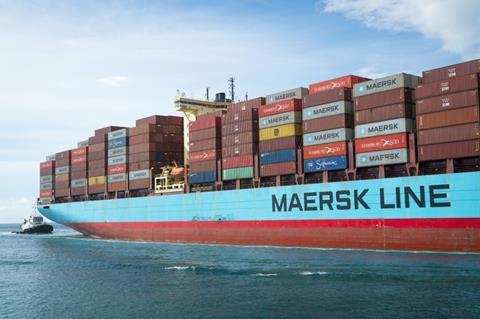Second quarter financials at the logistics giant were “ahead of expectations”, with yearly financial outlook raised accordingly

AP Moller-Maersk has said that it recorded a “robust” set of results in the second quarter (Q2) of 2023, despite what it described as “difficult market conditions”.
The logistics company said that ongoing market normalisation had continued through the quarter, leading to lower volumes and lower rates.
Revenue came in at US$12.99bn, down from US$21.65bn in the same period of 2022, mainly the result of lower ocean revenue.
Ocean revenue decreased to US$8.7bn from US$17.4bn, driven by a decrease in freight rates and loaded volumes.
While the volume and rate environment stabilised at a lower level during Q2, the ocean segment continued to be impacted by lower demand, driven by a significant inventory correction in particular in North America and Europe.
Maersk’s consolidated EBITDA was US$2.9bn, down from the US$10.33bn registered in the second quarter of 2022.
Profitability was described as “strong” at 12.4 per cent, although this was significantly lower compared to the ”extraordinarily strong” Q2 last year.
”The Q2 result contributed to a strong first half of the year, where we responded to sharp changes in market conditions prompted by destocking and subdued growth environment following the pandemic fuelled years,” explained Vincent Clerc, Maersk CEO.
”Our decisive actions on cost containment together with our contract portfolio cushioned some of the effects of this market normalisation,” he continued. ”Cost focus will continue to play a central role in dealing with a subdued market outlook that we expect to continue until end year.
”While we step this agenda further up, we are unwavering in our transformation and continue to invest in and deliver truly integrated logistics solutions to our customers and amplify their supply chain resilience for the uncertain times ahead.”
Reflecting the strong first half performance, Maersk has raised its financial outlook and now expects underlying EBITDA of US$9.5bn-US$11bn, up from US$8bn-US$11bn despite a weakened second-half market outlook.



